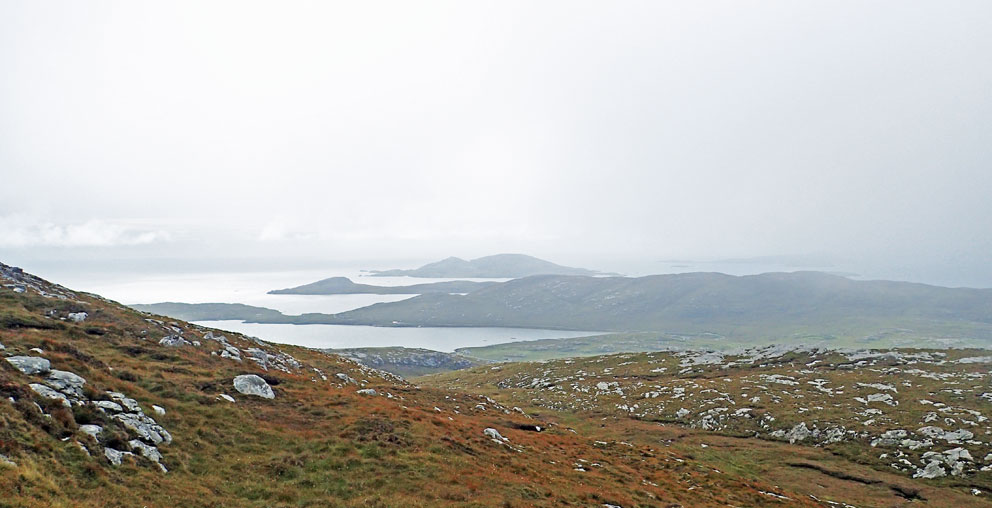My wife and I ended our Hebridean trip last August with a stay on Barra. I had been reading about the new Hebridean Way, a long-distance path that begins on Vatersay, and ends 185 miles north at the Butt of Lewis. While I was on Barra I wanted to walk some of the path, and I also wanted to climb Beinn Tangabhal, as I had not been up there for 20 years.
As it turns out, just where the Hebridean Way crosses the Vatersay causeway, it continues north by ascending the western shoulder of Beinn Tangabhal, which at just over 1000 feet elevation, is the third highest peak on Barra. The high point of that section of the path comes within 1000 feet distance, and 250 feet elevation, of the summit of Tangabhal; and so I decided make a climb up the mountain via the Hebridean Way.
The 'official' start of the path is marked by an iron marker, just opposite the Vatersay Community Hall.
The route then follows the road around to the Vatersay Causeway; but if you have the energy, a better way is to climb north over Heiseabhal Mor, the highest point on Vatersay. The views far outweigh the exertion required to get there.
 |
| Vatersay Causeway seen from slopes of Heiseabhal Mor |
As you start to climb, just above the road, you pass a very historic site: the Allt Chrysal Roundhouse.
Just offshore here I saw the boat Boy James. Under its previous skipper, Donald Beg, Boy James had taken me to the islands of Pabbay, Bernera, and Sandray - good times. Although Donald Beg no longer skippers the boat, it still does trips to the uninhabited islands south of Barra.
 |
| Boy James in the Sound of Vatersay |
As I climbed north, the view opened up to the east. Unfortunately it was a misty day, and as I climbed that view gradually disappeared. After ascending 800 feet the trig-pillar on the summit of Beinn Tangabhal appeared in the cold mist.
The summit was fascinating. Twenty years had passed since I was last here, and the mist that came and went with the wind made for quite an ethereal experience.
After enjoying the view (and a beer), I headed back to the Hebridean Way, which I followed down to the sands of Halaman Bay.
After reaching sea-level, the route went through through the sands of Halaman Bay to the Barra Ring Road. It was an amazing hike, one that I can highly recommend. I ended the hike with a two-mile road walk back to Castlebay, where I rewarded myself with a pint at the Craigard Hotel.
 |
| Halaman Bay and Tangasdal |






























